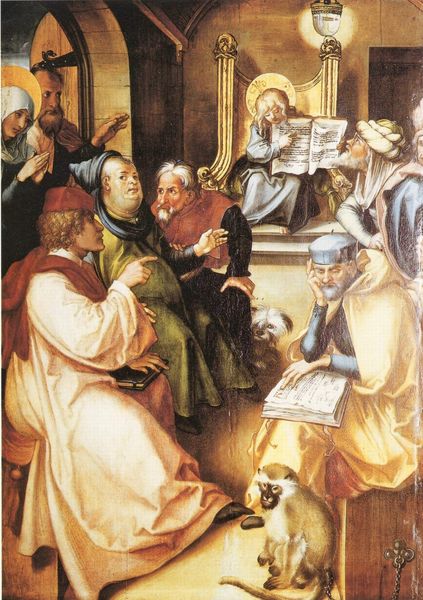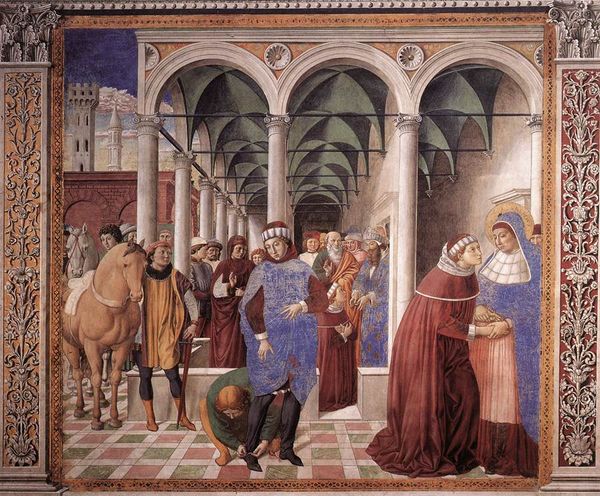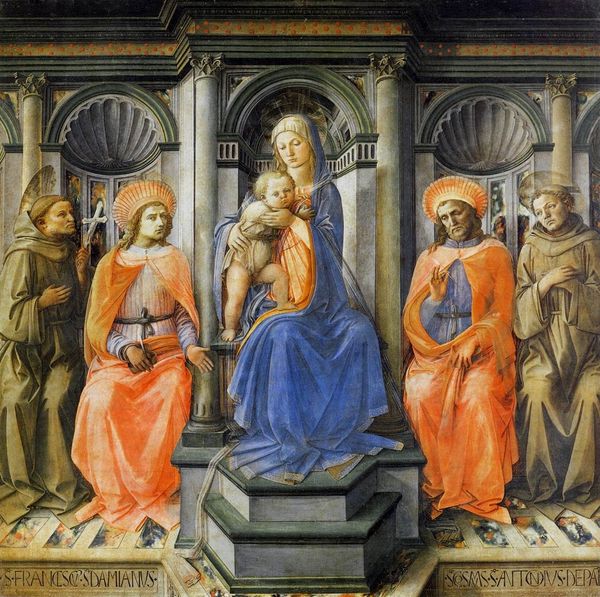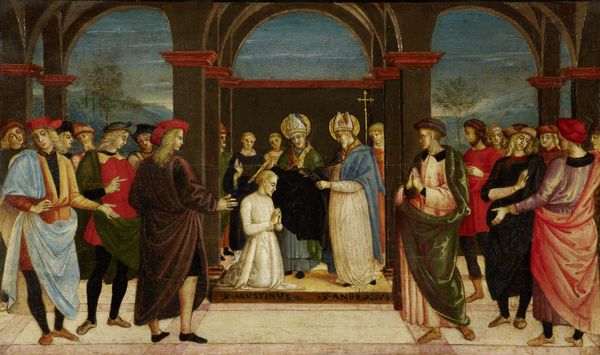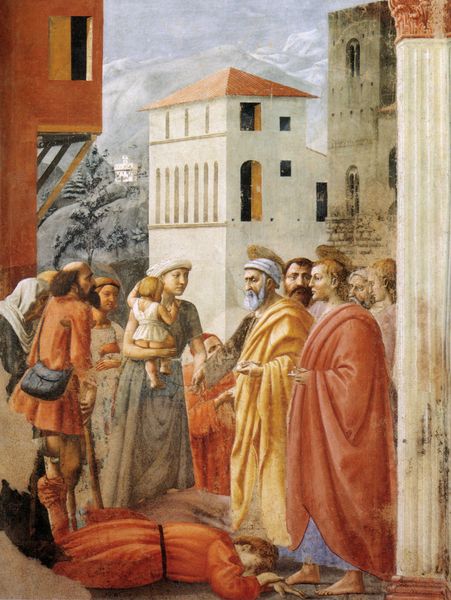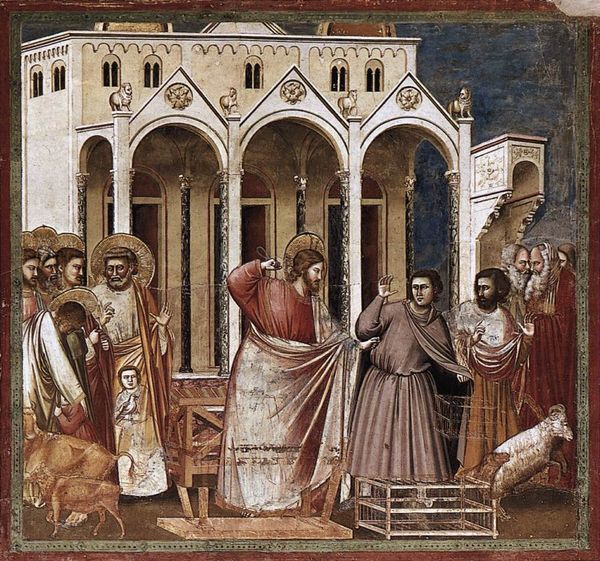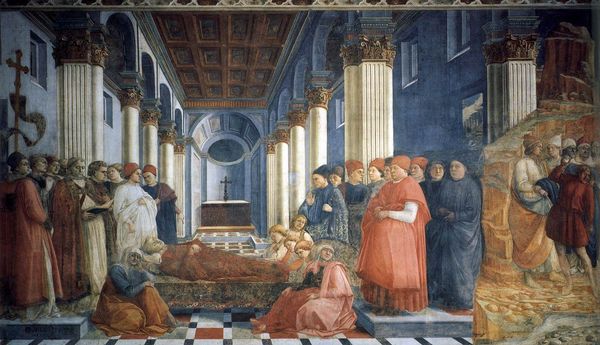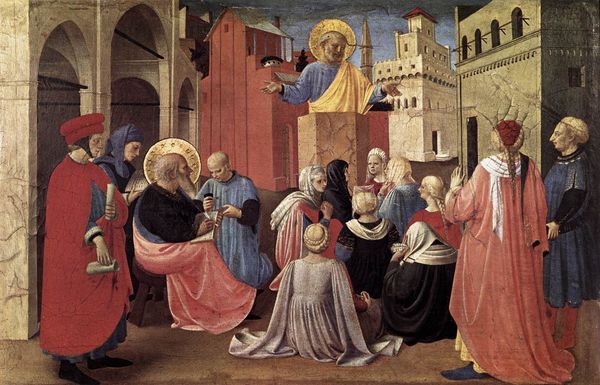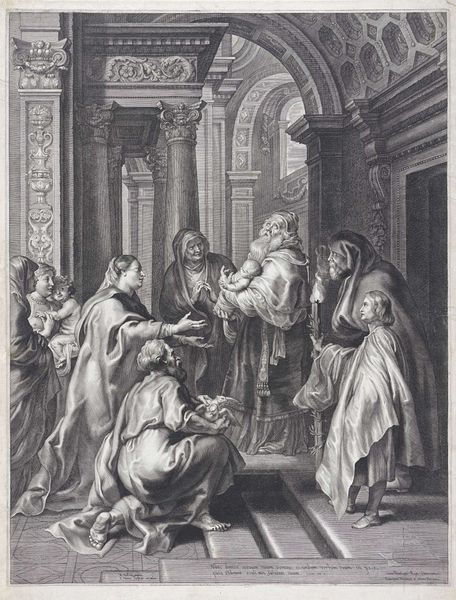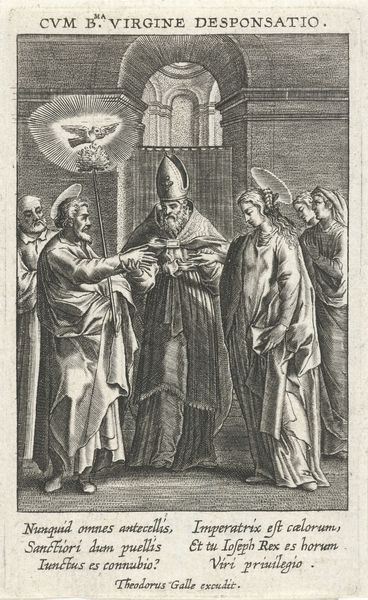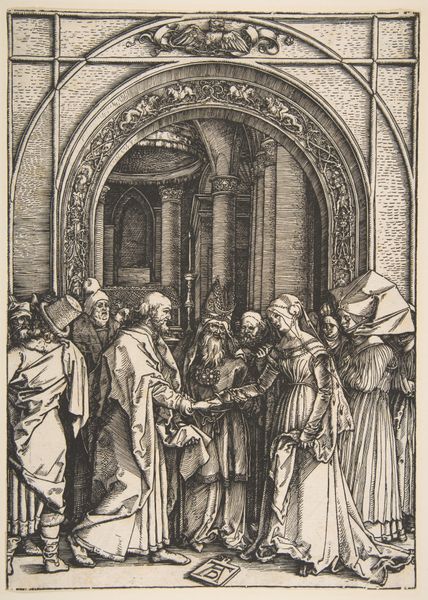
oil-paint
#
portrait
#
oil-paint
#
perspective
#
figuration
#
oil painting
#
group-portraits
#
christianity
#
history-painting
#
italian-renaissance
#
early-renaissance
#
virgin-mary
Copyright: Public domain
Pietro Perugino painted The Marriage of the Virgin in Italy during the late 15th or early 16th century. At its center, we see Joseph placing a ring on Mary’s finger, formalizing their union. The scene’s solemnity is reinforced by the classical architecture in the background. During this time, the Catholic Church played a huge role in Italian life, shaping everything from politics to culture. Religious institutions like the one depicted here in the painting’s background were not just places of worship but also centers of social life. Perugino, like many artists of his time, relied on the Church for patronage. Paintings like this were meant to reinforce religious doctrine and social norms. Notice the men to the left, some holding sticks; one is breaking his over his knee. They are the rejected suitors for Mary, emphasizing a social message about divine selection. Art historians look into the social, political, and religious context to understand the full picture. We need to consider the power structures and the influence of institutions on artists and their work.
Comments
No comments
Be the first to comment and join the conversation on the ultimate creative platform.
